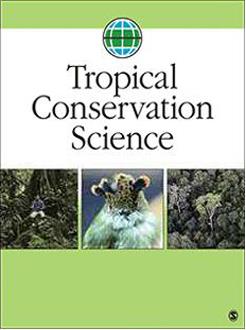One of the shortcomings of much of the science applied to conservation in the tropics has been its narrow disciplinary focus. Nowhere has this been more of an issue that in the science dealing with planting and growing trees. Tree planting has often been driven by silviculturalists and has tended to make huge assumptions about what the final objective of tree planting is. Mega programmes to restore forests or revegetate degraded lands have failed because they ignored the social, economic and even the biophysical contexts in which they were set.
David Lamb's book is welcome because it examines the issues of reforestation and afforestation from an ecosystem perspective – he discusses the issues in their broad social— ecological contexts. It brings together a lifetimes work on restoration ecology and provides a thoughtful and comprehensive account of past experiences. The text is generously supported by case studies and although the book claims in its title to deal with the Asia—Pacific region it contains much that will be of interest to those involved in forest conservation and management throughout the tropics. The reality is that a disproportionate share of the forest restoration activity in the tropics has taken place in Asia so the focus is justified.
Lamb gives emphasis early on to the need to fully understand why forests have been lost or degraded in the first place – clearly a failure to address the factors that have led to the present situation will predispose any restoration efforts to failure. This may seem rather obvious but it has often been lost of many of those in aid agencies and forest departments who have invested heavily in replanting trees. Worse still – many initiatives to plant trees were more an attempt to assert control over land – a perennial struggle for control between the forestry authorities and local people. Lamb does not dwell excessively on the failures – instead the book is replete with examples of things that have worked, show promise of working or ought to be tried. Many of the examples come from local and small scale initiatives and these seem to have a better track record than the big official attempts at restoration.
However the main reason that I appreciate this book is that it is published at a time when there is widespread euphoria that billions of dollars are about to be made available under schemes to Reduce Emissions from Deforestation and Degradation (REDD+). The “plus” refers to forest management and potentially to reforestation. Many of us who have seen a whole procession of these silver bullet solutions to the problems of tropical deforestation come and go are concerned that REDD+ is largely being driven by people whose experience is not rooted in the history of attempts by the international community to solve the “tropical forest problem” by throwing money at it. If all of these people were to read this book then the chances of them achieving something positive would be greatly increased.
In his 547 pages Lamb weaves together an inclusive and comprehensive treatment of the causes and consequences of deforestation. He gives special attention to the livelihoods of the people most directly affected by reforestation activities and casts his net wide in treating the full range of reforestation options that exist. There are sections dealing with managed natural regeneration, mixed species plantations and monocultures and the economics of reforestation efforts. The issues are constantly portrayed with the perspective of the local farmer in mind. The overall message is about ecosystem and landscape approaches even if the text does not confine itself to the narrow definitions of these concepts.
This book is the best in its class by far and should be available to all persons in forest and natural resource agencies as well as in the NGOs who often invest in tree planting. But where it could really have its most significant impact is in the debate on REDD+. This debate is dominating the conservation and development discourse at present and is sorely in need of the wisdom and experience captured by David Lamb in this superb book.






